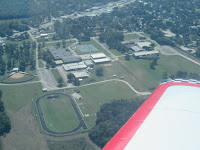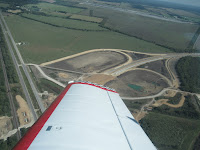The Liberty Gazette
December 29, 2020
Ely Air Lines
By Mike Ely and Linda Street-Ely
Linda: We’re almost there. We’re nearing the light at the end of the 2020 tunnel that no one, even with 20/20 vision, could have seen coming (well, except Fauci, Gates, China, you know). Good things have continued to happen for many, but we must not forget the deep pain and grief of others.
Considering the crazy year, we thought we’d offer some ideas for alternate endings and encourage you to think of your own: write it down, post it on social media, share it with a friend, or stick it on the fridge. You deserve it. You deserve to dream of better. Here are ours.
Christmas break, camping out in Northern Finland. That’s my alternate ending to 2020. Fly to Helsinki, and from there to Ivalo. Several airlines go there: Finnair, Air France, Nordic Regional, Japan Airlines, Qatar Airways, Lufthansa. I’ll pick either Finnair or Lufthansa. Finnair because it’s the local, and you should (almost) always fly the local. For instance, in Cambodia, we chose Cambodian Air, not because it’s luxurious, but because that airline’s home is where we were going. Lots of unseen benefits in doing that. Usually of the political kind. Lufthansa is a superb airline, so they are never off the list.
At the Kakslauttanen Arctic Resort, we have the choice of snow igloo, wood chalet, or an igloo made of thermal glass and steel. I’ll take glass. Think luxury here. Cold outside, but unbelievable views of Northern Lights from a snuggly warm inside.
The resort boasts celebrity treatment with world-class service, surrounded by nature. It’s in the Saariselkä Fell region of Finnish Lapland. If you’re inclined to tell anyone where you are, there’s free WiFi, but in my alternate ending, I’ll keep that a secret to share later.
The restaurants serve Laplandic specialties such as reindeer and char-grilled salmon, but we’ll request the vegan options in advance.
There’s a relaxation room with an open fireplace, and a nearby ice hole, in case we need to cool off.
Husky and reindeer safaris can be arranged, and we can go snowmobiling, cross-country skiing, rent Nordic walking sticks and snowshoes.
Mike: Not that I wouldn’t enjoy spending time in an igloo—I’ve built them while snow camping in the Sierra Nevada—but I’m thinking of a warmer climate. Say, the middle of the Indian Ocean. The Maldives. This country has about 1,200 coral islands on which to get lost. And they are all accessible by seaplane.
Not far from the equator, and surrounded by so much water, the year-round temperatures rarely vary from the mid-eighties. We’d airline into Male, the capital, and from there, take one of the 50 DeHavilland Twin Otters on floats to the Conrad Resort on Rangali Island and stay in one of their underwater villas.
I’m not sure who would think they were in an aquarium, the fish or us. But it’s a unique year-end destination, a long way from the other parts of this crazy world.
We’re looking forward to a better year!
ElyAirLines.blogspot.com


























